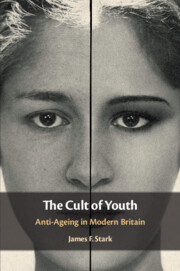3 - Diet, 1918–1929
Published online by Cambridge University Press: 28 February 2020
Summary
This chapter explores the constructions of diet as an important feature of achieving rejuvenation, highlighting the conflicting advice about certain foodstuffs as well as the relationship between specific dietary movements, such as vegetarianism and fasting, and youthfulness. The ‘Golden Age’ of vitamin discovery from 1919 until the mid-1930s saw a reconfiguration of dietary practices around these newly found nutritional substances. From this point onwards, the nutritional content of different foods was viewed not on their ability to promote youthful energy in themselves, but of the action of their constituent parts, which included vitamins. Far from causing major changes in consumption habits, however, vitamins were largely used to retrospectively justify existing dietary choices. Ultimately, dietary decision-making became subject to a greater number of influences as claims of authority came from the medical and scientific professions, manufacturers of foods and food supplements, and more traditional sources within the home and family. Collectively these attempted to satisfy hunger, maintain health and preserve youthful energy and appearance.
- Type
- Chapter
- Information
- The Cult of YouthAnti-Ageing in Modern Britain, pp. 68 - 105Publisher: Cambridge University PressPrint publication year: 2020



